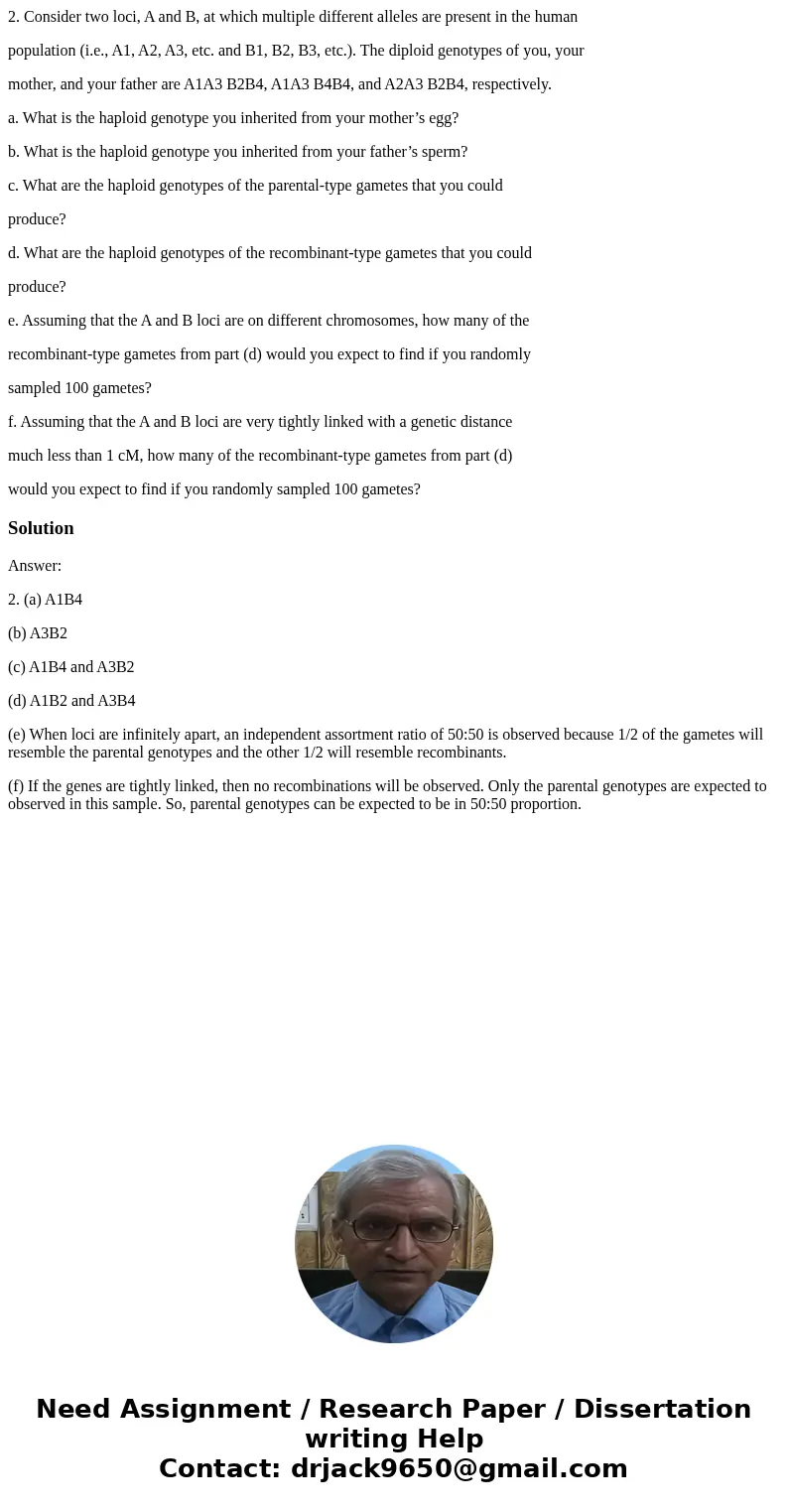2 Consider two loci A and B at which multiple different alle
2. Consider two loci, A and B, at which multiple different alleles are present in the human
population (i.e., A1, A2, A3, etc. and B1, B2, B3, etc.). The diploid genotypes of you, your
mother, and your father are A1A3 B2B4, A1A3 B4B4, and A2A3 B2B4, respectively.
a. What is the haploid genotype you inherited from your mother’s egg?
b. What is the haploid genotype you inherited from your father’s sperm?
c. What are the haploid genotypes of the parental-type gametes that you could
produce?
d. What are the haploid genotypes of the recombinant-type gametes that you could
produce?
e. Assuming that the A and B loci are on different chromosomes, how many of the
recombinant-type gametes from part (d) would you expect to find if you randomly
sampled 100 gametes?
f. Assuming that the A and B loci are very tightly linked with a genetic distance
much less than 1 cM, how many of the recombinant-type gametes from part (d)
would you expect to find if you randomly sampled 100 gametes?
Solution
Answer:
2. (a) A1B4
(b) A3B2
(c) A1B4 and A3B2
(d) A1B2 and A3B4
(e) When loci are infinitely apart, an independent assortment ratio of 50:50 is observed because 1/2 of the gametes will resemble the parental genotypes and the other 1/2 will resemble recombinants.
(f) If the genes are tightly linked, then no recombinations will be observed. Only the parental genotypes are expected to observed in this sample. So, parental genotypes can be expected to be in 50:50 proportion.

 Homework Sourse
Homework Sourse